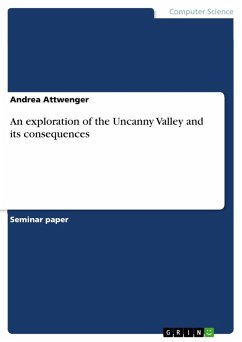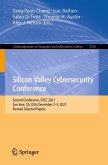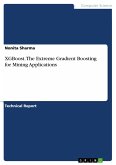Seminar paper from the year 2016 in the subject Computer Science - Internet, New Technologies, grade: 1.0, LMU Munich (Institut für Informatik), course: Hauptseminar Medieninformatik, language: English, abstract: Humans usually favor the company of beings similar to them and it is therefore natural to assume that with increasing human likeness, robots and artificial characters become more likeable and accepted. However, this is only true up to a point where the dynamic is reversed and synthetic characters appear uncanny. Thus, increased realism does not necessarily lead to an increase in acceptance. This phenomenon is called the "Uncanny Valley" and was first proposed by Masahiro Mori in 1970. It has recently sparked more interest due to advancements in robot development and computer animation and therefore a potential relevance in the robot, movie and video game industries as well as for scientific computer simulations. The theory of the Uncanny Valley is not undisputed, which is why this paper aims to present both evidence in favor and arguments against its existence or interpretation. Furthermore, the phenomenon shall be examined in more detail, investigating its backgrounds, possible explanations, influencing factors and its consequences on android design. Among the issues to be further investigated that were found in the discussion are alternative stimuli, the empirical measurement of the uncanny response, a universal categorization system, and the usefulness of the Uncanny Valley as a design guide. There are indications that the relationship between human likeness and likeability may not be as clear as proposed by Mori, but more-dimensional with additional factors to consider.
Dieser Download kann aus rechtlichen Gründen nur mit Rechnungsadresse in A, B, BG, CY, CZ, D, DK, EW, E, FIN, F, GR, HR, H, IRL, I, LT, L, LR, M, NL, PL, P, R, S, SLO, SK ausgeliefert werden.









